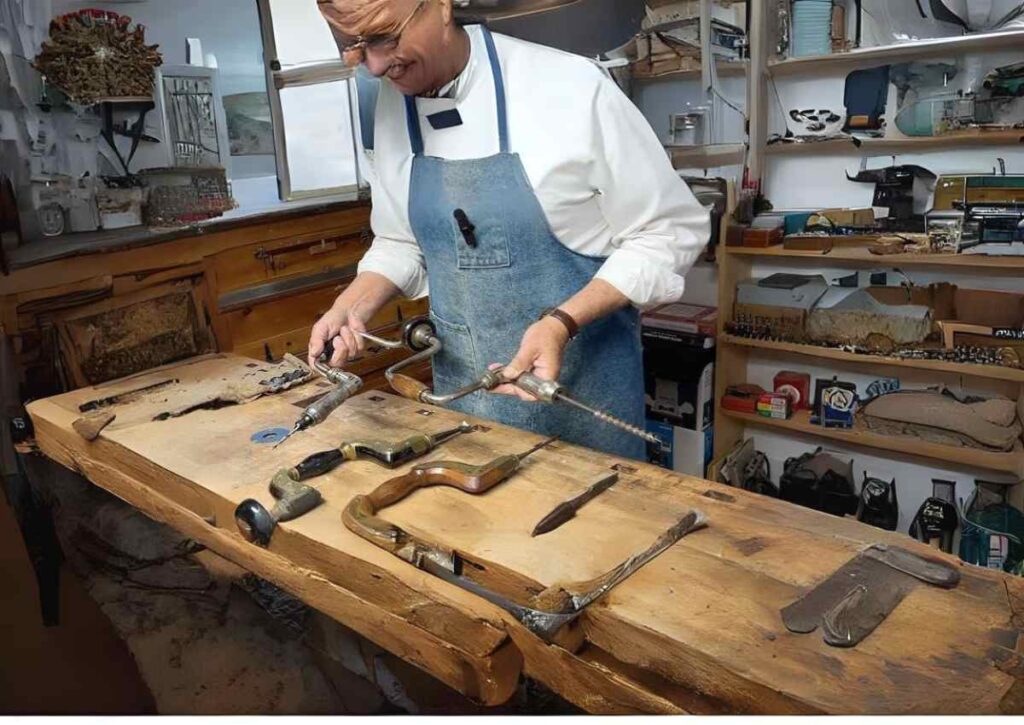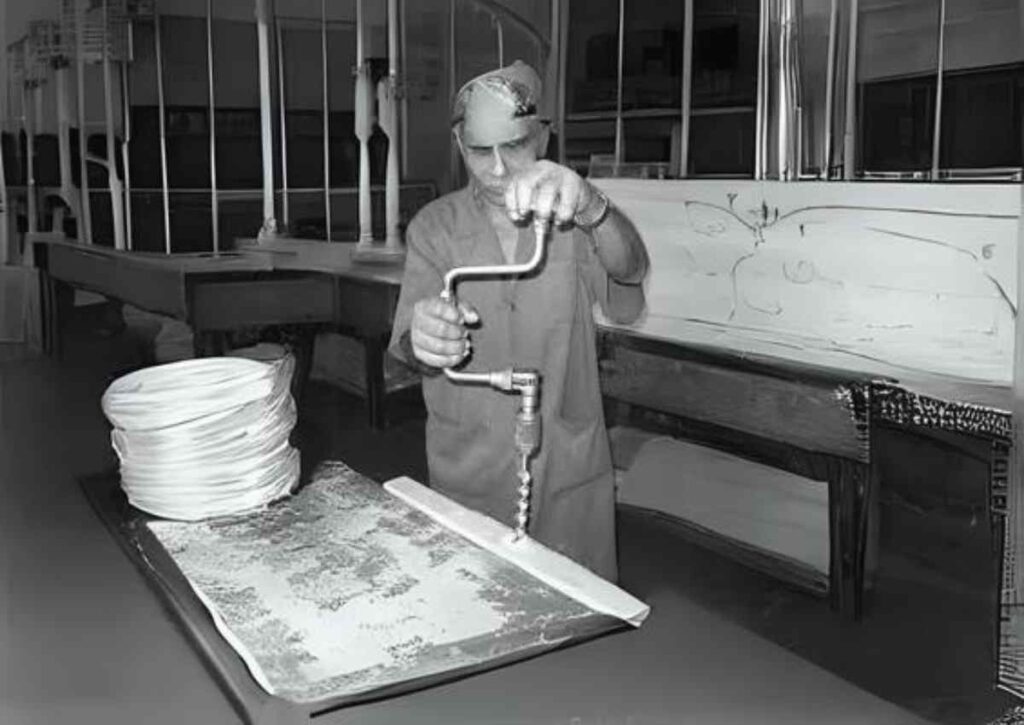In the realm of woodworking, the humble brace drill emerges as a timeless companion, orchestrating the symphony of craftsmanship with each meticulously drilled hole.
As a hand tool paired with a drill bit or auger, the brace showcases its prowess in woodwork, offering a unique blend of efficiency and precision.
Brace Drill
A brace drill is a hand tool used for drilling holes in wood, featuring a U-shaped handle and a bit.
The user applies pressure on the top while rotating the handle, allowing the lead to pull the bit through the wood.
The tool provides greater torque than hand-powered drills, enabling the drilling of wider and deeper holes.
It typically has a chuck spindle with a gear release for ratcheting in tight spots, and historically, it dates back to the early 15th century.
The Anatomy of a Brace Drill

At its core, a brace drill is a marriage of a bit and a U-shaped handle, where pressure on the top meets the rotation of the handle.
The magic unfolds when a well-maintained drill bit, featuring lead and cutting spurs, requires minimal pressure from the user.
In a perfect world, the lead would smoothly pull the bit through the wood, guiding it with a deft hand.
The brace’s distinctive crank-shaped handle goes beyond aesthetics; when compared to hand-powered alternatives, it provides superior torque.
This torque, however, comes at the cost of rotational speed. While modern hand drills can boast several hundred revolutions per minute, the brace’s deliberate pace, typically below 100 rpm, ensures control and precision in every turn.
The Chuck Spindle and Gear Release Dance

The front stage of the brace hosts the chuck spindle, adorned with V-shaped brackets or clamps.
A clockwise turn of the spindle tightens the grip on the drill bit, while a counterclockwise motion liberates the bit for removal.
This simple yet effective mechanism embodies the essence of the brace drill’s user-friendly design.
Modern braces elevate their game with a three-position gear release strategically positioned behind the chuck.
This innovation allows for ratcheting in tight spots, offering versatility in drilling directions.
Whether it’s clockwise removal with a counterclockwise ratchet action or vice versa, the gear release adapts to the craftsman’s needs.
A Glimpse into History

The roots of the brace drill trace back to 1420-1430 in Flanders, where the earliest models featuring a U-shaped grip made their debut.
Over the centuries, the brace has worn various monikers, such as bit brace, carpenter’s brace, ratchet brace (if equipped with a ratchet mechanism), and swing brace.
Each name carries a legacy of craftsmanship, echoing through the hands of artisans across time.
Conclusion
As we delve into the intricate world of brace drills, we unveil a tool that transcends generations, marrying tradition with innovation.
From the rhythmic dance of the crank to the strategic embrace of the chuck spindle, the brace drill invites craftsmen to wield precision and create masterpieces.
Embrace the artistry of woodworking with the brace drill, where each turn etches a legacy in the tapestry of craftsmanship.
FAQs
What sets a brace drill apart from modern power drills?
A brace drill is a hand tool that relies on a U-shaped handle and manual rotation, offering superior torque for precision drilling in wood.
Unlike power drills, it operates at a deliberate pace, providing control and craftsmanship at each turn.
How does the chuck spindle work in a brace drill?
The chuck spindle, located at the front of the brace, has V-shaped brackets or clamps.
Clockwise rotation tightens the grip on the drill bit, while counterclockwise motion releases the bit for removal, showcasing the simplicity and effectiveness of the design.
Can a brace drill handle tight spaces?
Yes, modern brace drills often feature a three-position gear release behind the chuck, allowing for ratcheting in tight spots.
This enhances versatility, enabling the craftsman to adapt the tool to various drilling directions and situations.
What historical significance does the brace drill hold?
The brace drill dates back to the early 15th century, with the first models featuring a U-shaped grip appearing in Flanders between 1420 and 1430.
Over the centuries, it has been known by various names such as bit brace, carpenter’s brace, ratchet brace, and swing brace, reflecting its enduring legacy in craftsmanship.
Why is the torque of a brace drill valuable in woodworking?
The U-shaped crank of a brace drill provides greater torque compared to hand-powered drills.
This torque allows craftsmen to drill wider and deeper holes in wood, making the brace drill an essential tool for precision woodworking.









